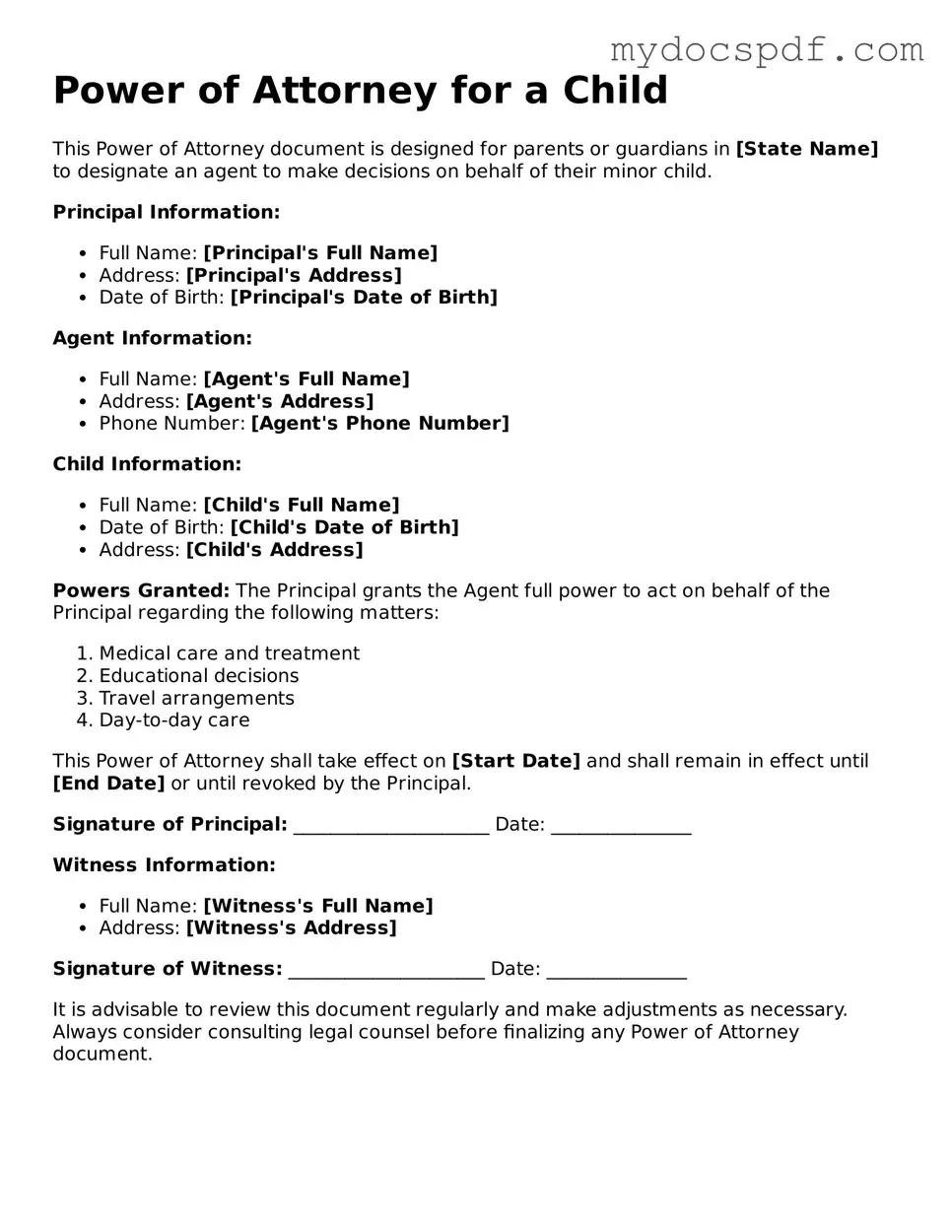Power of Attorney for a Child
This Power of Attorney document is designed for parents or guardians in [State Name] to designate an agent to make decisions on behalf of their minor child.
Principal Information:
- Full Name: [Principal's Full Name]
- Address: [Principal's Address]
- Date of Birth: [Principal's Date of Birth]
Agent Information:
- Full Name: [Agent's Full Name]
- Address: [Agent's Address]
- Phone Number: [Agent's Phone Number]
Child Information:
- Full Name: [Child's Full Name]
- Date of Birth: [Child's Date of Birth]
- Address: [Child's Address]
Powers Granted: The Principal grants the Agent full power to act on behalf of the Principal regarding the following matters:
- Medical care and treatment
- Educational decisions
- Travel arrangements
- Day-to-day care
This Power of Attorney shall take effect on [Start Date] and shall remain in effect until [End Date] or until revoked by the Principal.
Signature of Principal: _____________________ Date: _______________
Witness Information:
- Full Name: [Witness's Full Name]
- Address: [Witness's Address]
Signature of Witness: _____________________ Date: _______________
It is advisable to review this document regularly and make adjustments as necessary. Always consider consulting legal counsel before finalizing any Power of Attorney document.
